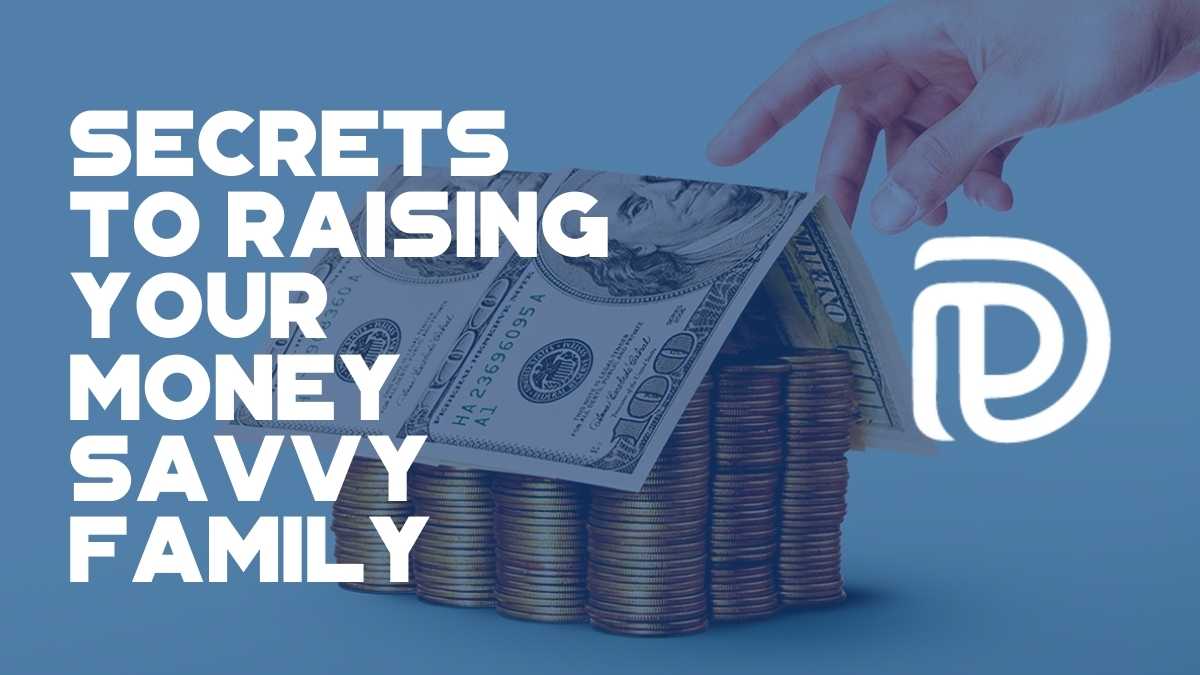Secrets To Raising Your Money Savvy Family
[Editor’s note: Today’s guest post comes from Doug Nordman. He retired from the U.S. Navy’s submarine force in 2002 at the age of 41. He and his spouse, a retired Navy Reservist, reached their financial independence on a high savings rate. Doug wrote the book “The Military Guide To Financial Independence And Retirement.” He and their daughter Carol Pittner wrote “Raising Your Money-Savvy Family For Next Generation Financial Independence” and published it with ChooseFI Media.]
Take it away Doug….
*********************************************************
Financial Independence
“How did you raise your daughter to reach her own financial independence (FI)?”
I started hearing that question from my audience over three years ago.
I speak about financial independence at conferences and meetups, both in person and online. I’m not a financial advisor, and our daughter can confirm that I’m certainly not an expert on child development or parenting.
However Carol has been hearing about FI for her entire life, and she was nine years old when I stopped working for paychecks. She’s keenly aware of the benefits of the FI lifestyle.
Today, the Internet is full of advice about paying off debt and saving for financial independence. Instead of being asked about savings rates or investing, I’ve heard from hundreds of parents who are concerned about motivating their kids to reach their own FI.
The problem is that their kids aren’t interested in saving or investing. They want to spend their money!
It turns out that kids have to learn to manage money before they’ll develop any motivation to save or invest it. They achieve this skill mostly by making mistakes with money. The bad news is that there are lots of mistakes.
The good news is that you can help them work through those mistakes with small amounts of money at home, instead of with thousands of dollars in their first 401(k)… or with tens of thousands of dollars of consumer debt.
You’re spending your hard-earned dollars to raise your kids anyway, and you can give them a tiny portion of it to manage on their own. The money wasted by a kid is a lot cheaper than letting them grow up to be financially ignorant adults.
David Owen says it best in his book “The First National Bank Of Dad”: kids think that parents are crazy about money.
Kids grow up watching their parents spend money, and they want to practice this adult skill too. Yet whenever a kid gets birthday money from Grandma, their parents try to convince them to “save it for college.” To a six-year-old, college is two lifetimes away– and who wants to save money for more school?!?
When kids encounter this ludicrous attitude, the only way they can control their money is to spend it as quickly as possible– before it’s confiscated by the parental authorities. Ha!
Join the Passive Investors CircleMoney Conversation
In our family, we struggled to change that money conversation.
Two years ago, my spouse and I attended a CampFI meetup and then visited our daughter and son-in-law for a couple weeks. Over dinner (they’re excellent cooks), I mentioned that we’d had the questions (again!) about next-generation FI. We asked Carol about her money memories, and she lit up with stories.
Carol had plenty of kid memories about money. More interestingly, as a young adult she had a new perspective on those experiences and what they taught her.
By the end of dinner I was taking notes. By the end of dessert we had a book outline. A week later Carol had written most of three chapters and I was scrambling to hold up my end of the co-author deal. Six months later at another CampFI, the founders of ChooseFI asked us to sign up for their editing and publishing. You can find that book at your local public library, or ask your librarian to order it
Carol’s first clear money memory was her preschooler play with a toy cash register and its stacks of plastic coins. We found that toy at a garage sale because Carol was intensely interested in how we spent money at the grocery store. That’s probably because she wanted all the candy in the store, and our perpetual debate led to a few meltdowns.
Eventually (out of parental desperation) we negotiated an agreement for the grocery trips. We’d give her four quarters, and if she behaved then she could buy One Special Thing. (Even today we still pronounce it with capital letters.) If she didn’t behave, though, then she had to put away the money and try again on our next grocery trip.
Her behavior immediately improved, and that money talk changed our family relationship. Instead of fighting with us (exhausted) parents over spending money, she was full of questions about spending her money.
Grocery trips turned into teachable moments. We started giving Carol an allowance so that she could carry her own money to the grocery store for One Special Thing.

David Owen writes that parents have to brace themselves with a mental image of their kids waving flaming $20 bills like 4th of July sparklers.
While kids are wasting money by lighting it on fire (as if it grew on trees), they’re also learning what wasting it feels like.
It’s an opportunity for parents to guide the discussions about money feelings and choices and what the kid could do differently with the next flammable $20 bill.
We can help our kids understand those money feelings by sharing their joy at everything they could buy, and discussing their choices with an abundance mindset, and helping them with the transactions. We can also share their sad feelings when they’ve learned that the candy or toy didn’t live up to their expectations. How did they make that choice? What else could they try next time?
No lectures, and no judging. Parents can help their kids develop their internal money dialogue by talking them through the issues and brainstorming new ways to recover from the inevitable financial disappointments.
Our money conversations with Carol spread from the grocery store to garage sales and thrift stores. Instead of pushing for saving, though, we talked about what things cost and what she could buy. Carol got an allowance “for being a good member of the family”, although we parents really gave her the allowance for her chances to make choices.
In her mind, she had enough money to afford anything. As parents, we kept her allowance small enough that she couldn’t afford everything and had to make good choices. She had enough for One Special Thing but she had to save for the awesome stuff, and that led to more discussions about deferred gratification.
Putting Kids To Work
American consumerism runs rampant, and in our family it led to many teachable moments. Carol developed proficiency at her spending choices, and she was ready to learn to manage more money.
As she grew older, we parents finally had the opportunity to sneak in a few financial incentives to earn and save. How do you get more money for the awesome stuff? Why, you work for it.
There’s plenty of jobs to help with around the house, and we parents were always happy to pay a few dollars for good effort under our training and supervision. Before Carol could earn money at jobs, though, she had to finish her homework and do her chores. Neglecting chores meant losing privileges (because you’re not helping the family), but– even worse– it meant you couldn’t earn money at jobs.
The positive incentive of job money turned out to be much more powerful than the negative consequences of avoiding your chores.
Don’t Miss Any Updates. Each week I’ll send you advice on how to reach financial independence with passive income from real estate.
Sign up for my newsletterCompound Interest
When Carol learned elementary-school math, we taught the miracle of compound interest. Kids struggle with percentages, but they understand “free money” very well.
Carol’s money was hers to spend or save however she wanted, but if she deposited her money with the Bank Of Carol then every dollar earned a penny of interest per month.
She could withdraw her money from the bank any time she wanted it, but the catch was that it only paid out at the end of the month.
She tested the bank’s policies and financial strength many times. Eventually she decided that she had outstanding customer service and she trusted our custody of her cash. We followed up with glowing monthly reports on her earnings and many more happy discussions about what she could do with her growing wealth.
Raising Your Money Savvy Family
By then a lot of it was wasted on toys. Wow, there were a lot of teachable moments from those years.
Behind the toy frenzy, though, we parents were establishing new financial incentives.
Every time Carol found a coupon for (healthy) food that we bought at the grocery store, she got half the savings. (Or she could find coupons to use for her One Special Thing.) If she packed a (healthy) lunch from home, then she could keep half of the money that we saved from school lunches. If she rode her bicycle to school then she kept half of the bus money. (But if she dawdled on school mornings and missed the bus, then she had to pay us to drive her to school.)
She could help us with menial jobs for the minimum wage– but if she agreed to let us train her to do those jobs on her own then she earned a higher wage.
For her ninth birthday, Carol got a real checking account from her local credit union. (She even got an ATM card– although today we’d use a debit card.) Balancing that checkbook led to many tears until we showed her how to track her spending in Quicken. The Bank Of Carol moved to online transfers and Quicken reports, too. By age 13 she was an authorized user on one of my credit cards (I never used it), and that was a powerful lesson on corporate financial marketing tactics.
We parents made our share of mistakes. In 2006 (the year before the iPhone) we didn’t see the point of “letting” her buy a cell phone, but later that year she turned 14 years old. She got her state work permit and a part-time job, and she bought her own darn cell phone with her own darn money. As we now know, that made it much easier for her to stay in the loop on her school group projects and study sessions.
Our parental financial incentives continue through her teen years and even college. If she was a good steward of the college fund, then after graduation there was profit-sharing. Her campus was full of entrepreneurs, and she learned from them.
Today Carol’s launched from the nest and she’s achieved orbital parameters. She and her spouse are on the cusp of their own financial independence. (They have a high savings rate!) Better yet, all of her money-savvy family skills are paying off for a very personal reason: they’re raising our baby granddaughter.
We can’t wait to see how they raise their money-savvy family for next-generation financial independence!
Want To Learn More?
[You can read more about the book at childFIRE.com. You can reach Carol through [email protected], and Doug at [email protected].


